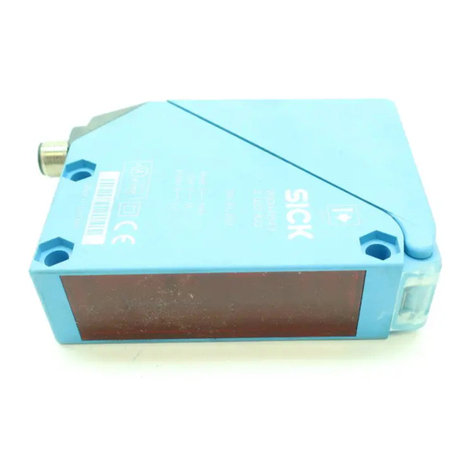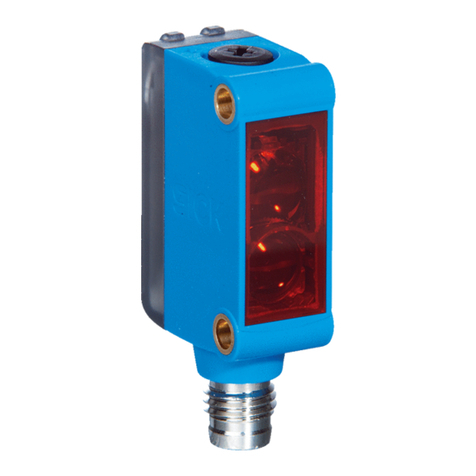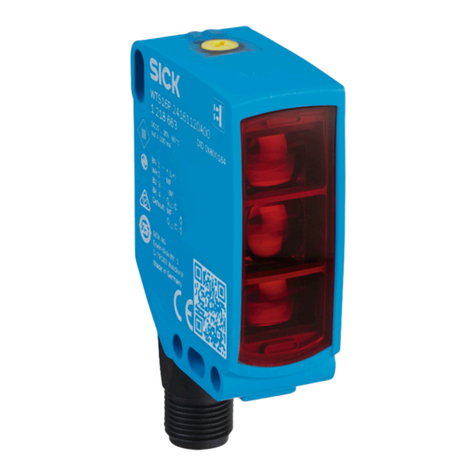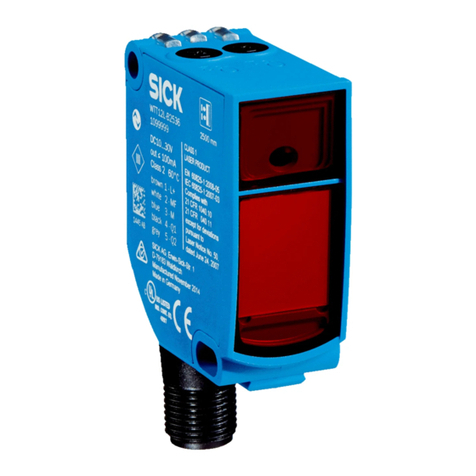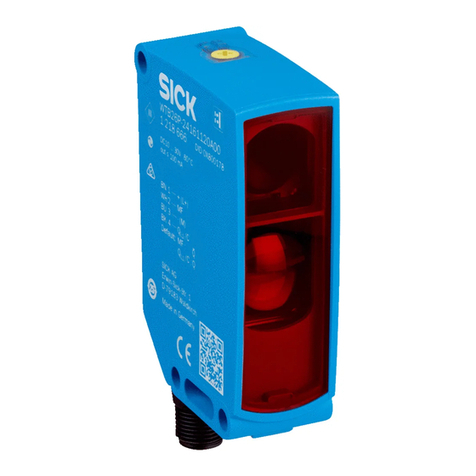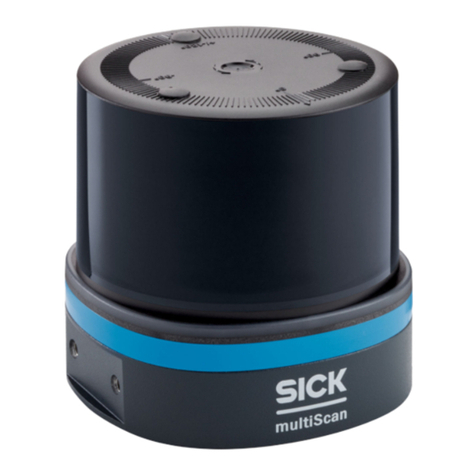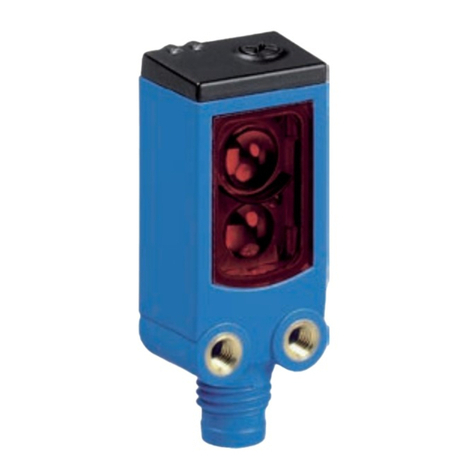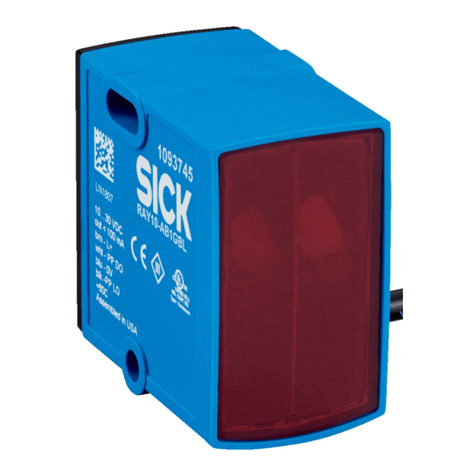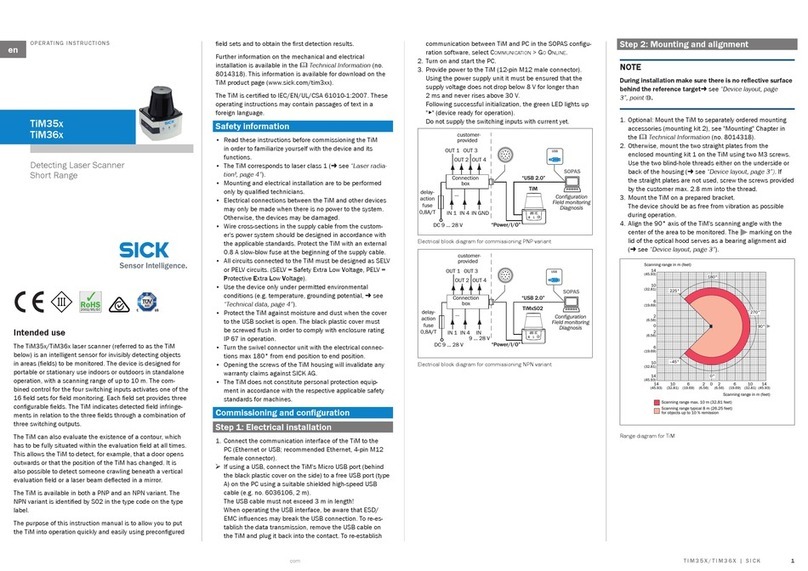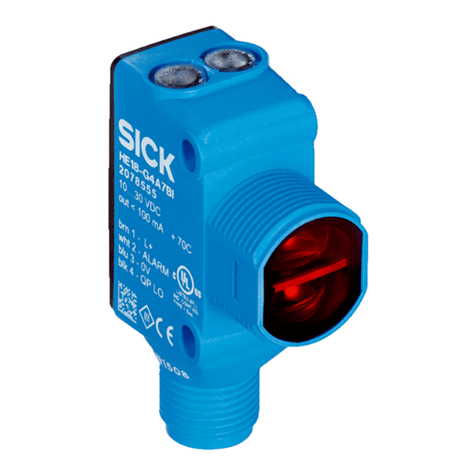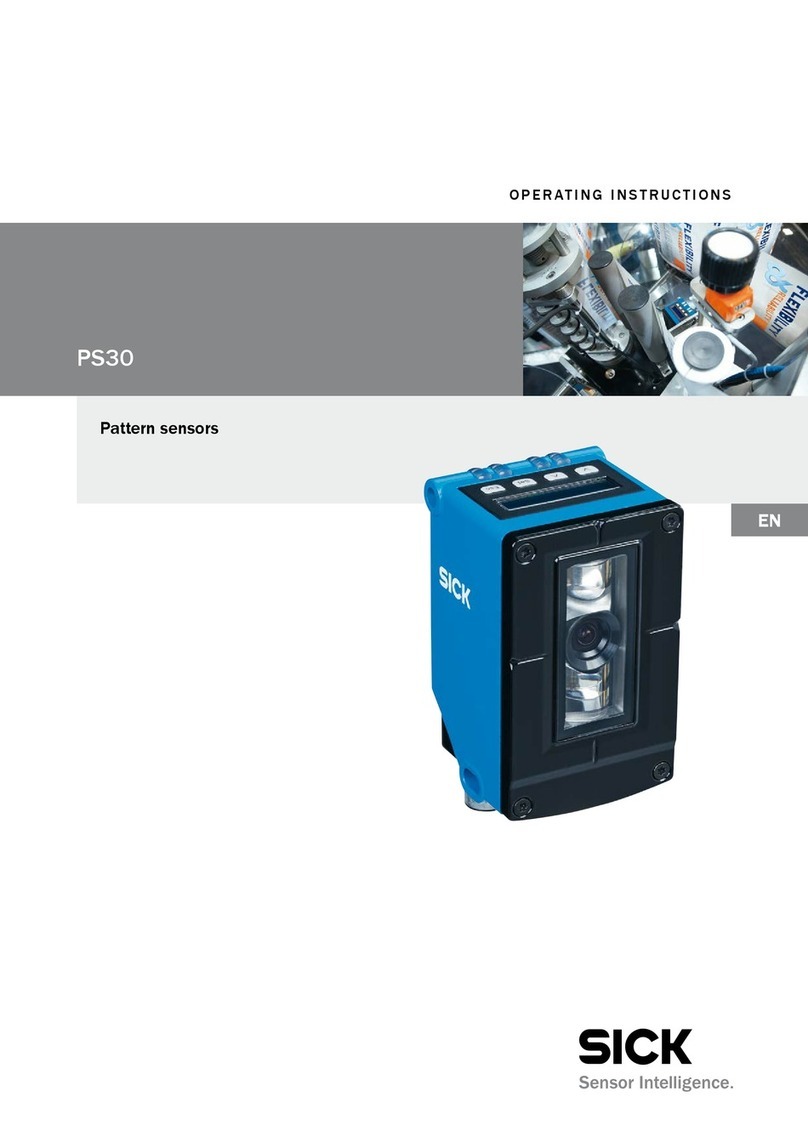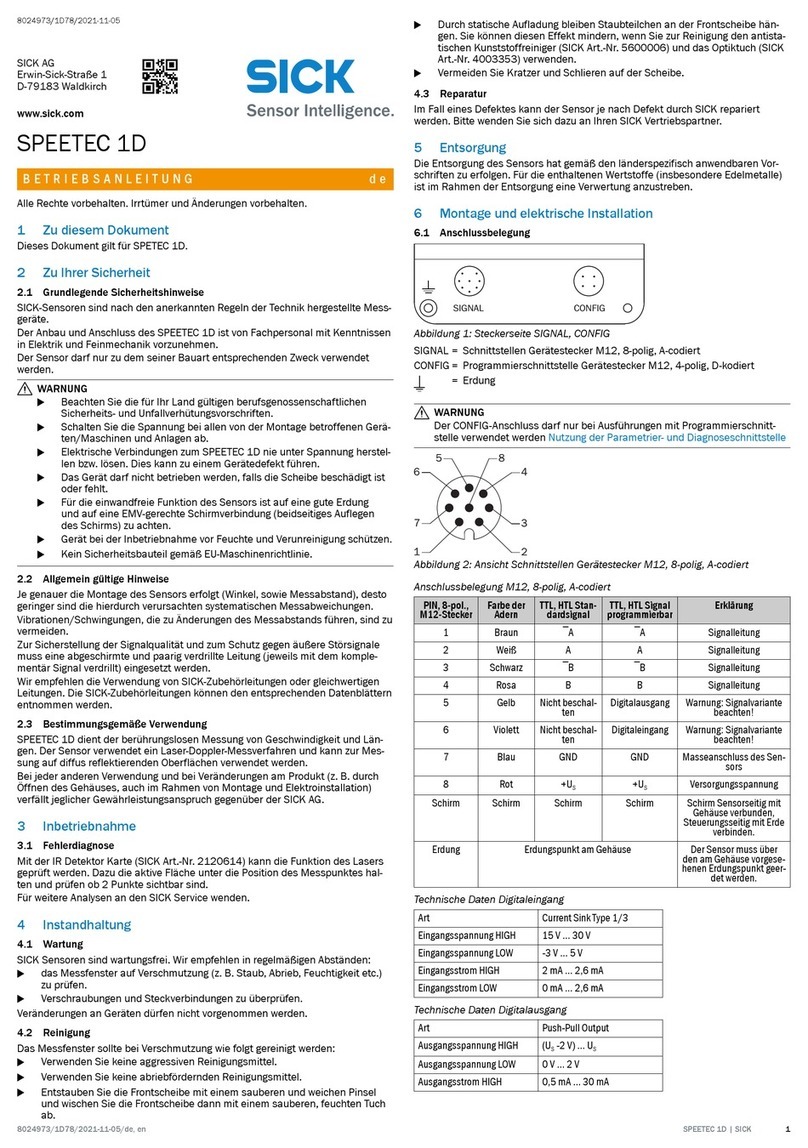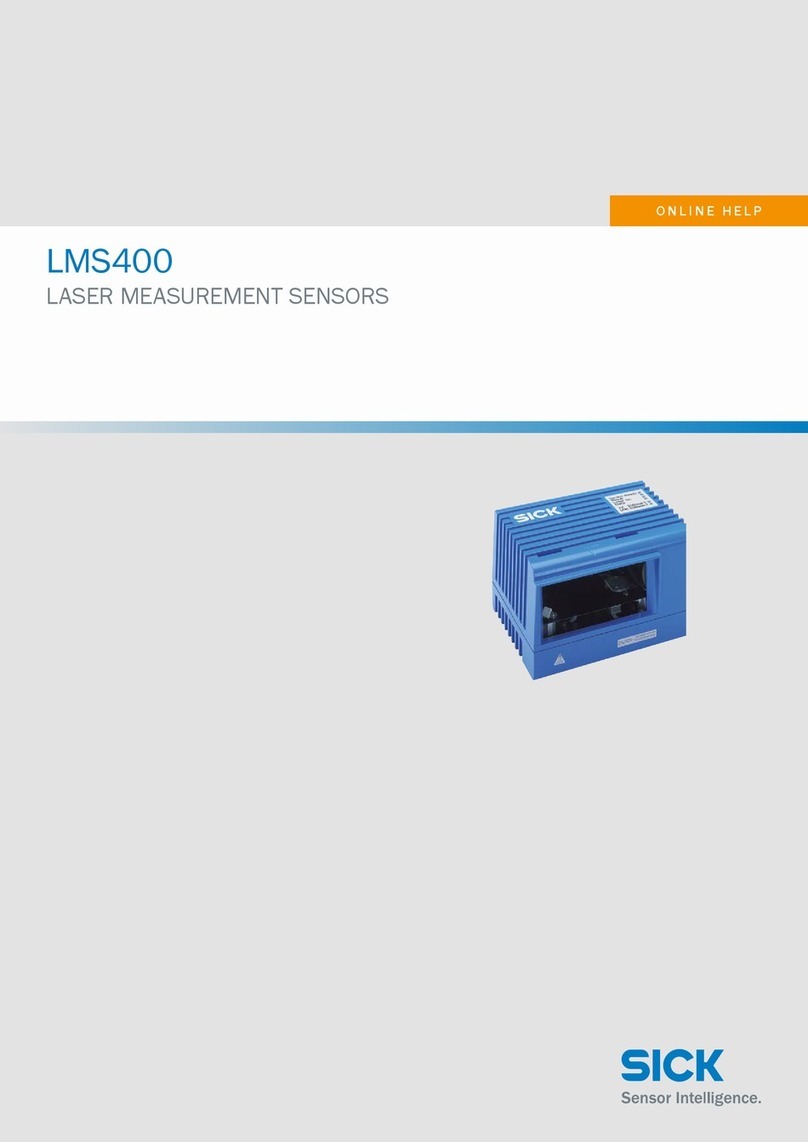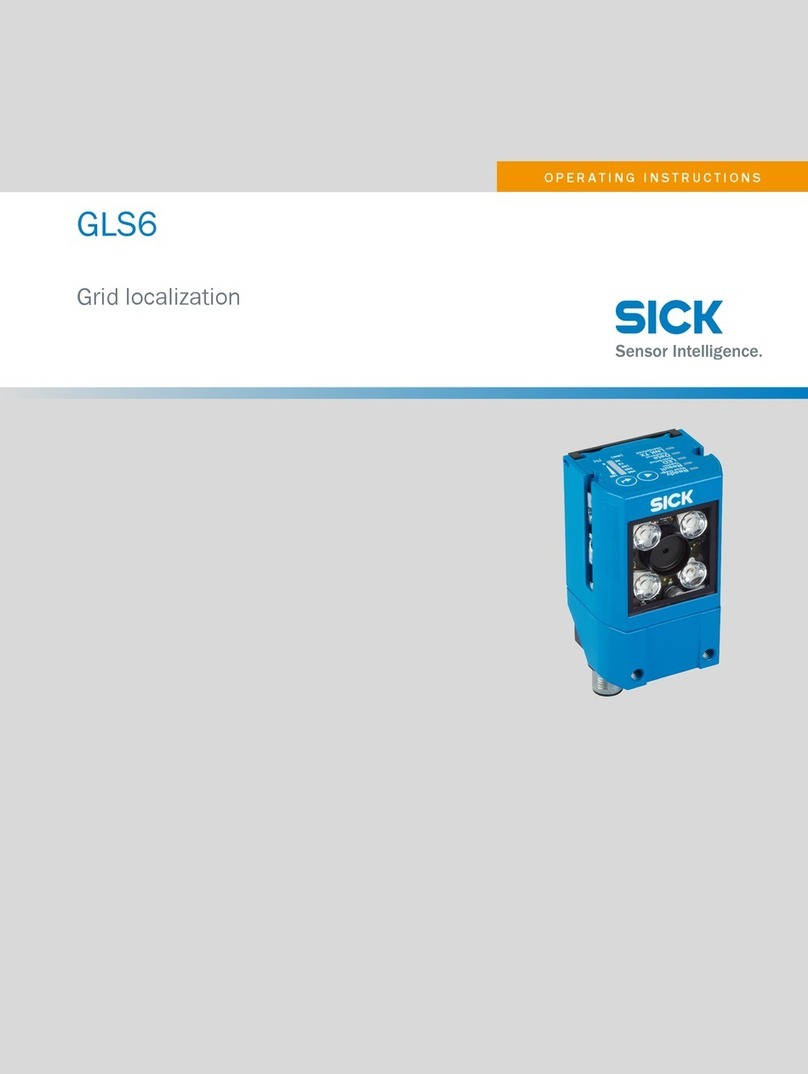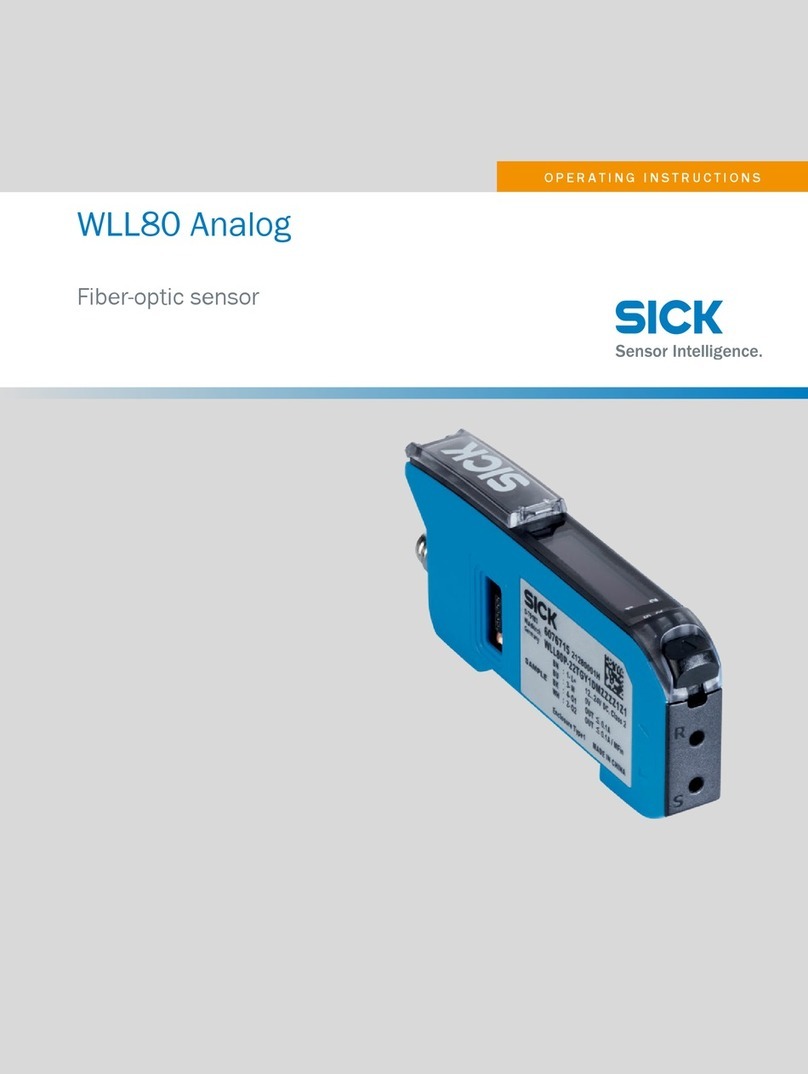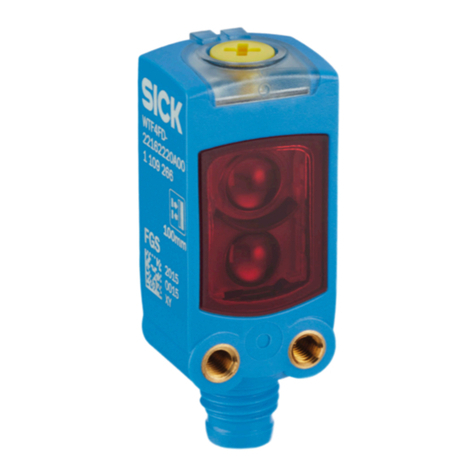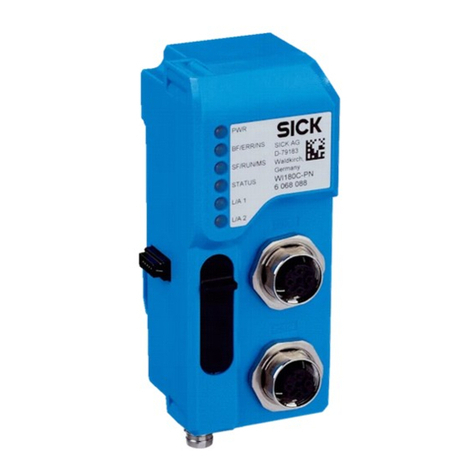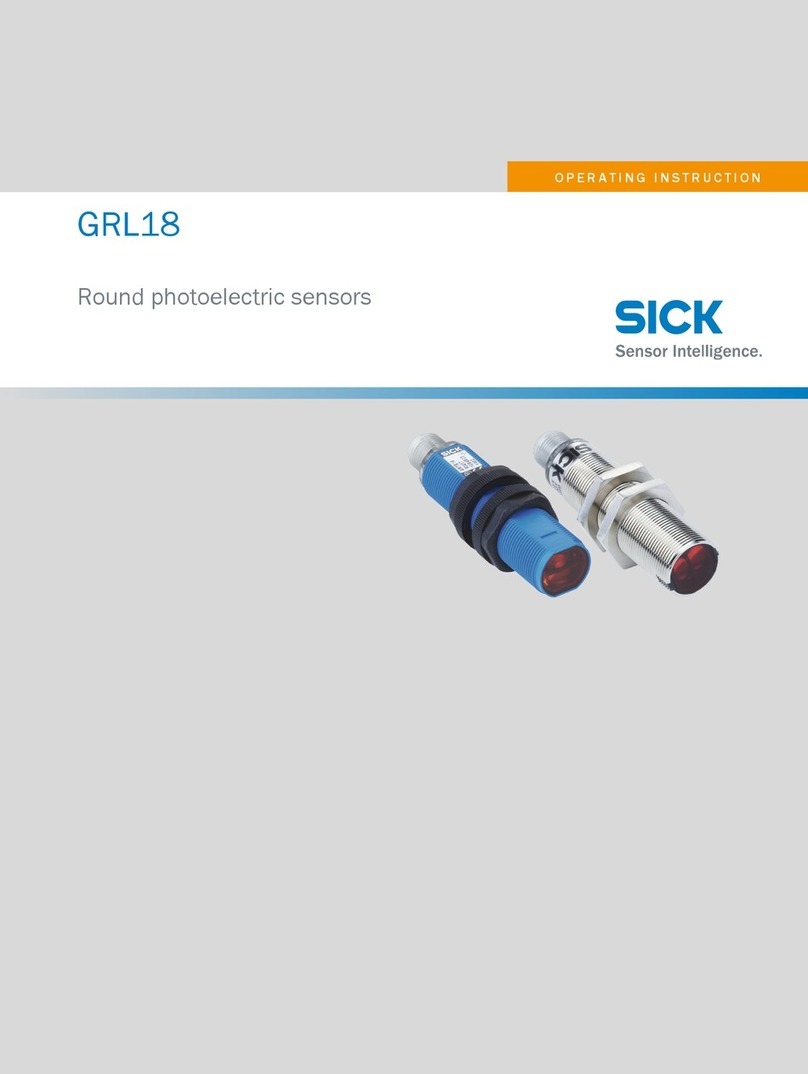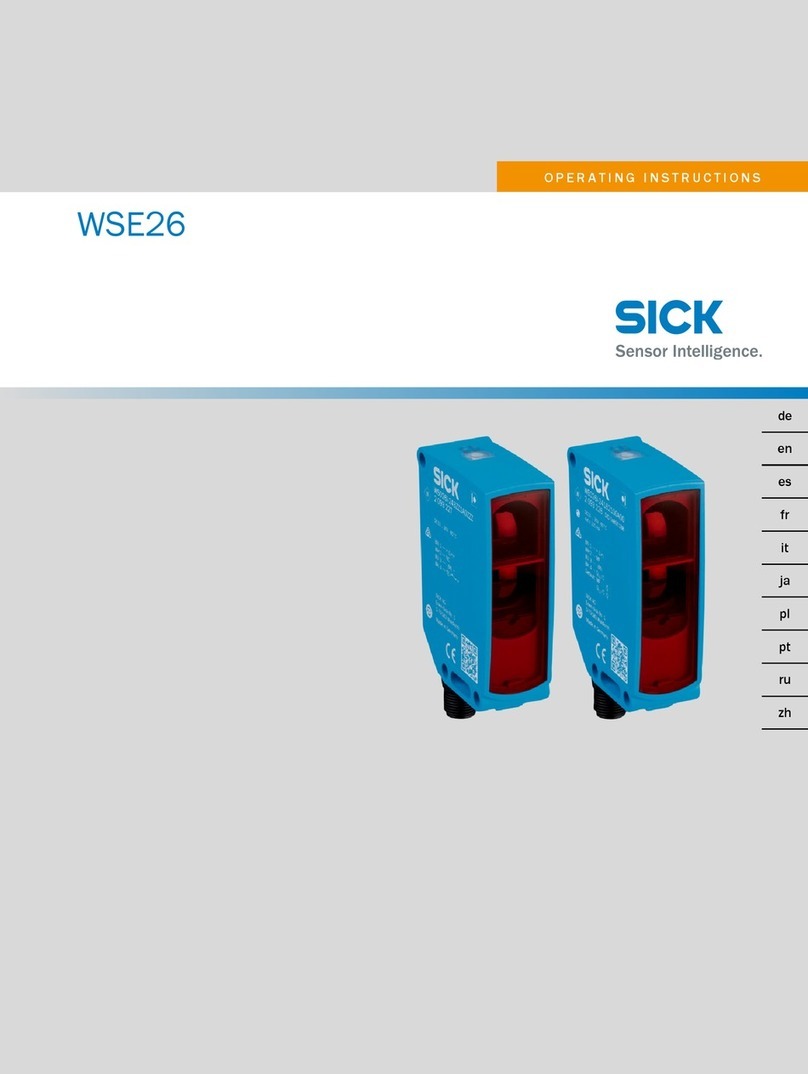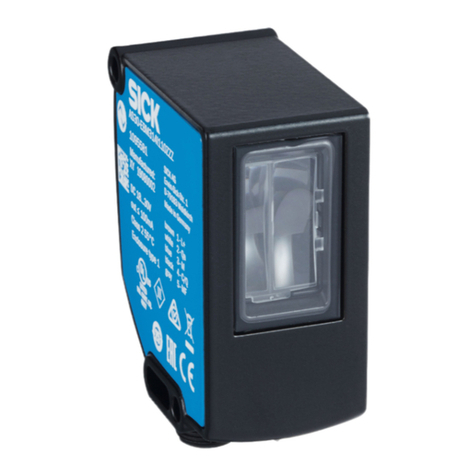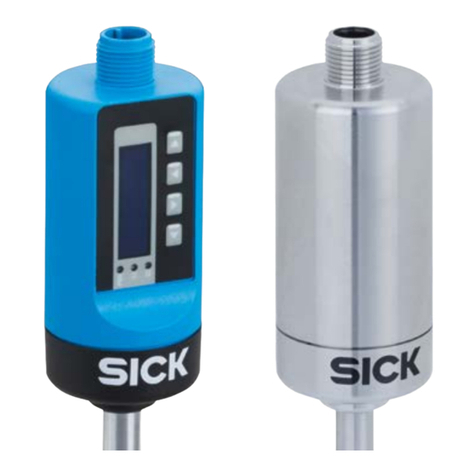
dark switching light switching
2 1 t = 1
1 2 t = 2
Timer stages can be set from 0 to 2 seconds.
Light/dark switch: The sensor is in light switching mode when optional light/dark poten‐
tiometer is rotated to the “L” position. The sensor is in dark switching mode when optio‐
nal light/dark potentiometer is rotated to the “D” position. The green power supply LED
will flash once when the mode is changed.
6 Fault diagnosis
Table indicates which measures are to be taken if the sensor stops working.
7 Table Fault diagnosis
LED indicator/fault pattern /
LED indicator/fault pattern
Cause /
Cause
Measures /
Measures
Green LED does not light up /
Green LED does not light up
No voltage or voltage below
the limit values /
No voltage or voltage below
the limit values
Check the power supply,
check all electrical connecti‐
ons (cables and plug connecti‐
ons) /
Check the power supply,
check all electrical connecti‐
ons (cables and plug connecti‐
ons)
Green LED does not light up /
Green LED does not light up
Voltage interruptions /
Voltage interruptions
Ensure there is a stable power
supply without interruptions /
Ensure there is a stable power
supply without interruptions
Green LED does not light up /
Green LED does not light up
Sensor is faulty /
Sensor is faulty
If the power supply is OK, re‐
place the sensor /
If the power supply is OK, re‐
place the sensor
Yellow LED flashes; if Health is
present then take note of the
corresponding output signal; if
Alarm is present then take note
of the corresponding output
signal /
Yellow LED flashes; if Health is
present then take note of the
corresponding output signal; if
Alarm is present then take note
of the corresponding output
signal
Sensor is still ready for opera‐
tion, but the operating conditi‐
ons are not ideal/additionally
with health output: power sup‐
ply interrupted /
Sensor is still ready for opera‐
tion, but the operating conditi‐
ons are not ideal/additionally
with health output: power sup‐
ply interrupted
Check the operating conditi‐
ons: Fully align the beam of
light (light spot) with the back‐
ground. / Clean the optical
surfaces . / Readjust the sen‐
sitivity (potentiometer) /
Check sensing range and ad‐
just if necessary; see graphic
F. / With health output: Check
the power supply, check all
electrical connections (cables
and plug connections). /
Check the operating conditi‐
ons: Fully align the beam of
light (light spot) with the back‐
ground. / Clean the optical
surfaces . / Readjust the sen‐
sitivity (potentiometer) /
Check sensing range and ad‐
just if necessary; see graphic
F. / With health output: Check
FAULT DIAGNOSIS 6
8017858.YMH6 | SICK
Subject to change without notice 5
